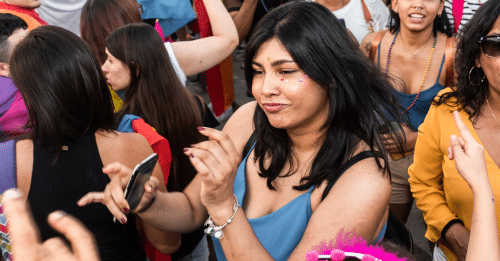The War on Latino Books: Why Schools Are Banning Our Stories
The alarming rise in book bans is a direct attack on our freedom to access diverse stories, especially those from Latino voices.

This article is part of a series developed in partnership with Project Pulso.
Latino history is vital to the American narrative–there’s no America without Latino contributions. Despite this, Latino storytelling and history are increasingly being sidelined in educational institutions. The issue deepens when we look at the emerging trend of book banning.
What Is the Modern Book Ban?
Book banning is the act of removing books from reading lists, libraries, or bookstores based on content disagreements. Often done under the pretense of safeguarding children, most of these challenges come from parents and library patrons. However, elected officials, school boards, and even librarians can also be champions of imposed ignorance. After all, they know knowledge is power.
In March 2024, the American Library Association (ALA) reported that “the number of titles targeted for censorship at public libraries increased by 92% [in 2023] over the previous year.” This is alarming for multiple reasons:
- Censorship: Book banning is fundamentally a form of censorship. Although the First Amendment protects against government censorship, private individuals or organizations face limited restraint. This makes book banning a primary example of legal censorship in the U.S.
- Democracy at Risk: At the core of democracy is the free exchange of ideas. By constraining this, we challenge the principles on which the U.S. was built. Censorship often paves the way to tyranny, allowing a small group to dominate the narrative.
- Stagnation: Book bans impede societal progression by avoiding challenges to prevailing beliefs. To quote English writer George Orwell from his eerily prescient dystopian novel “1984”: “The best books are those that tell you what you know already.” Do we aspire to a society that shuns diverse thought? Book bans lead fully in that direction.
- Marginalization: Such bans further alienate underrepresented communities. With Latinos already underrepresented in literature, these bans exacerbate the problem.
Marginalization: Such bans further alienate underrepresented communities. With Latinos already underrepresented in literature, these bans exacerbate the problem.
Latino Representation: The Understated Crisis
Despite making up a significant portion of the K-12 public school population, Latino students are presented with textbooks that overlook or barely touch upon key topics in Latino history. Out of the books published for young readers, only 5% concern or are authored by Latinos. This void extends beyond just fictional narratives.
Recent bans in states like Texas and Florida are erasing the already sparse representation Latinos have. Essential books reflecting Latino experiences, such as My Name is María Isabel, are disappearing from shelves. Project Pulso underlines this issue in their post:
Images shared by projectpulso on Instagram
Even beyond Latino literature, there’s a broader attack against critical theory. This crusade aims to stifle discussions on racism, sexism, and systemic inequality. In a single school year, 1,477 books faced bans, according to PEN America. A startling number of these pertained to LGBTQ themes, protagonists of color, race, and racism.
A Spotlight on Banned Latina Authors
Amidst the unsettling rise in book bans across the U.S., Latina authors have found themselves at the epicenter of this censorship storm. These authors not only highlight the complexities of Latino heritage but also bridge gaps in understanding, creating stories that resonate across boundaries. Many invaluable works by Latina authors have been banned, including:
- “The House of the Spirits” by Isabel Allende: Spanning generations, this saga chronicles the lives of the Trueba family in Chile, accentuating the mystical powers of its female characters. Challenges against it cite reasons like its “pornographic” nature and alleged attacks on Catholicism.
- “The House on Mango Street” by Sandra Cisneros: Through vignettes, this novel paints the life of Esperanza Cordero, a young Chicana in Chicago. Bans have been enforced based on claims that it instigates skepticism against “American values.”
- “Out of Darkness” by Ashley Hope Pérez: Set against the backdrop of 1930s Texas, this novel delves into the love between a Mexican American girl and a Black teen. Challenged for its graphic nature, it’s deemed “sexually explicit” and has earned a place on the Top 10 Most Banned Books list.
- “The Poet X” by Elizabeth Acevedo: The narrative revolves around 15-year-old Xiomara, who channels familial tension into her poetry. Accusations against it range from being “anti-Christian” to violating religious safeguards.
- “How the Garcia Girls Lost Their Accents” by Julia Alvarez: This novel charts the journey of the Garcia sisters, uprooted from their Dominican heritage, as they grapple with a starkly contrasting life in New York, touching on themes of identity, family, and culture.
- “Like Water for Chocolate” by Laura Esquivel: This enchanting novel narrates the intriguing history of the De La Garza family in Mexico, where love, tradition, and magic blend seamlessly. It delves deep into themes of forbidden love, family obligations, and the transformative power of food.
- “Bless Me, Ultima” by Rudolf Anaya: Set in New Mexico; this narrative introduces us to Antonio Marez and Ultima, a healer. As Antonio steps into manhood, Ultima becomes his guiding light, illuminating his path through childhood bigotry, familial crises, and the mysteries of spirituality.
The increasing trend of book banning, especially of Latino literature, is a pressing concern. Not only does it threaten our democratic principles and societal growth, but it also amplifies the marginalization of already underrepresented communities. Our society’s richness lies in its diversity, and by stifling these voices, we risk losing an integral part of our narrative. It’s time to reassess and recognize the value of all stories, regardless of their origin.












